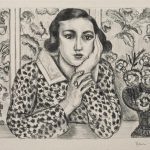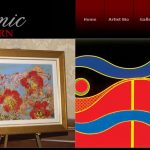In a Studio like a Garden, Art Grows like Flora and Miro is the Gardener
“I think of my studio as a vegetable garden.
Here, there are artichokes.
Over there, potatoes.
The leaves have to be cut so the vegetables can grow.
At a certain moment, you must prune.
I work like a gardener or a wine grower.”
—Joan Miró, 1959
COPENHAGEN — It has been said that artist Joan Miró (1893-1983) regarded everything in the universe as alive and as part of a great interconnected totality. An innovative master of surrealism, Miró also saw himself as a gardener, his studio as a kitchen garden and his artworks as plants that he cultivated to grow under his expert care.

Left to Right: Joan Miró’s “Personage” (1967) and “The Caress of a Bird” (1967). [Credit: Fondation Marguerite et Aimé Maeght, Saint-Paul.]
When in 1956 he got the large studio space he had always dreamed of, Miró was finally free to express himself as he wished. The artist gathered gardening and natural materials like worn-out tools, branches and stones. He would cast in bronze or paint in bright primary colors the found objects, and later incorporate them into his abstract sculptures.
Through May 30, the ARKEN Museum of Modern Art is celebrating the artist’s connection to nature with a new exhibit, Miró – I Work Like a Gardener. The exhibit features 111 sculptures, paintings and works on paper as well as works in textile and ceramics created by the world-famous artist in his studio on Majorca.
According to the museum website:
Miró transformed the objects and their meaning. The straw hat of a donkey becomes the face of a sculpture. An old butcher’s block forms the legs of a curious character. An ironing-board or a toilet seat is viewed as the belly of a strange creature. When we look at the sculpture we can break it down into individual components or see it as a whole, as a creature of the imagination. Like Miró we can both see the thing’s original function and open our minds to other meanings and possibilities.
The sculptures underscore Miró’s fundamental belief in a living, dynamic world full of possibilities. The late sculptures contribute to a new understanding of Miró’s painting, which is also dynamic and eternally mutable. A dot in a painting by Miró can be understood in turn as an abstract dot, as a remote planet or as the eye of a possible creature looking back at you. Everything comes alive in Miró’s universe.
For more information on this exhibit, please visit www.arken.dk/content/us or visit sales.parkwestgallery.com/results/All/Joan-Miro to view selections from the Park West Gallery Miró Collection
Related Links:





